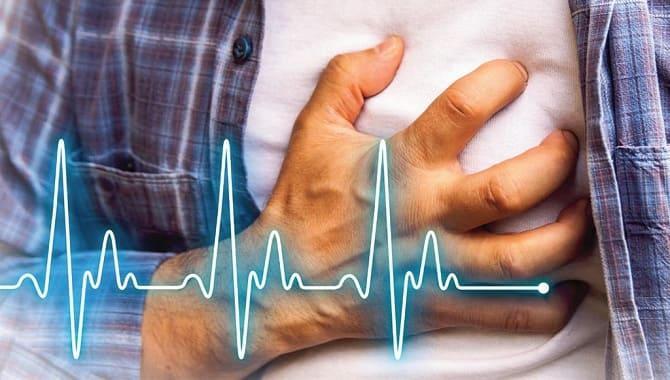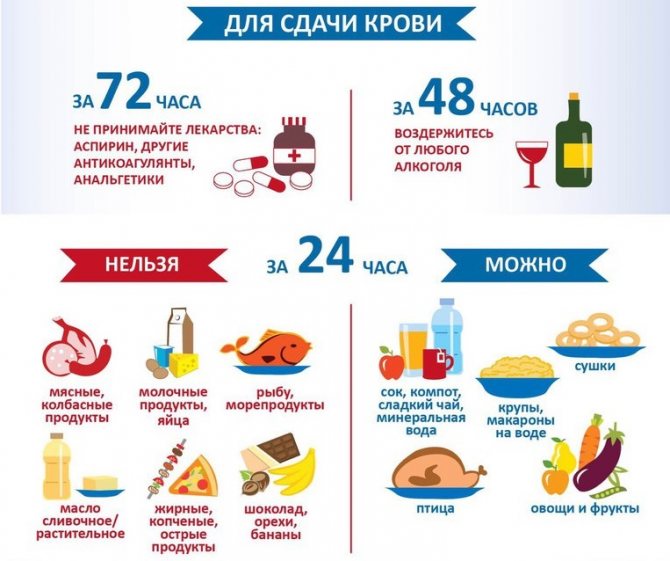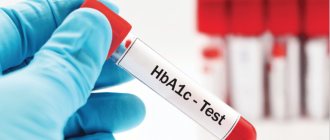How is bilirubin formed?
Erythrocytes - red blood cells - contain hemoglobin. It carries oxygen to the body tissues from the lungs. When old and damaged red blood cells die, hemoglobin is released and converted into bilirubin.
Bilirubin is converted hemoglobin
Newly formed bilirubin is called indirect: it is highly toxic and dangerous to humans, especially to the central nervous system (CNS). Therefore, the body then starts the process of neutralizing bilirubin - this happens in the liver. When bilirubin becomes safe - straight - the liver secretes it along with bile, and it leaves the body through the intestines.
When an analysis is made for bilirubin levels, there are three types: indirect, direct and total. For an adult under 60 years of age, the following indicators are considered normal:
- Indirect bilirubin – within 3.4-12 mmol/l;
- Direct bilirubin – within 1.7-5.1 mmol/l;
- Total bilirubin is in the range of 5.1-17 mmol/l.
If the bilirubin level is higher than normal, you need to find out the reason for the jump, because it may indicate the development of a serious illness.
Where do diffuse liver changes come from? Diffuse changes affect the structure of the liver, its main functional tissue – the parenchyma.
Norms of transaminases and bilirubin
ALT (alanine aminotransferase) and AST (aspartate aminotransferase) are enzymes involved in the formation of amino acids. Their peculiarity lies in the fact that normally they are found mainly in the cells of the heart, liver, skeletal muscle, and pancreas. They are found in small quantities in the blood of a healthy person. Their readings are influenced by gender and age:
- Normal ALT in adult men is not higher than 41 units/l;
- ALT norm in women is up to 31 units/l;
- ALT in infants under 6 months. – up to 56 units/l;
- ALT in children 6-12 years old – not higher than 39 units/l;
- AST is normal in men and women – from 10 to 40 units/l;
- AST norm in children under 6 months. does not exceed 77 units/l;
- AST from 6 to 12 years – up to 47 units/l.
An important indicator when making a diagnosis is the de Ritis coefficient, which is equal to the ratio of AST to ALT. Its normal value is 1.33; an increase or decrease in the coefficient indicates the presence of pathology.
Bilirubin is formed in the blood from hemoglobin during the breakdown of red blood cells; this form is called indirect (free). Entering the liver, it is neutralized and converted into direct (bound) bilirubin. As part of bile, it enters the intestines and is excreted from the body with urine and feces. When taking liver samples, both the total pigment and its varieties are determined, the normal values of which are given in the table:
| Indicator (µmol/l) | Men | Women | Newborns |
| Total bilirubin | 8,5-19,8 | 3,3-19,0 | 24-210 |
| Indirect bilirubin | no more than 20 | 5,6-17,1 | 3,5-197,6 |
| Direct bilirubin | 0,22-8,1 | 0,95-4,2 | 0,5-12,0 |
If the results do not allow an accurate diagnosis to be made, other indicators of liver tests are additionally used: total protein, alkaline phosphatase, thymol test.
Increased total bilirubin - reasons
An increase in total bilirubin in adults leads to:
- Primary biliary cirrhosis;
- Gallstone disease and other conditions with impaired bile flow;
- Parasitic diseases;
- Liver tumors;
- Any type of hepatitis (viral, drug-induced, autoimmune, etc.);
- Intrahepatic cholestasis;
- Jaundice of pregnancy;
- Accelerated breakdown of red blood cells;
- Impaired production of enzymes in the liver that convert indirect bilirubin into direct bilirubin.
What the doctor sees on an ultrasound of the liver Ultrasound is the most popular diagnostic method when the patient complains of discomfort in the right side, nausea, weakness and general loss of strength.
How to properly prepare for a biochemical study
To avoid possible stress when the test result shows a low level of a substance, and the only reason is poor preparation for the test, you need to follow some simple rules:
- discuss with your doctor and stop taking all medications that may give false readings;
- a few days before the test, moderate physical and psychological stress;
- at least a day before the test, lighten the diet, exclude fried foods that complicate the liver’s function;
- observe the drinking regime, you need to drink plain still water;
- exclude alcohol, coffee;
- do not smoke 3 hours before the test;
- You need to donate blood in the morning on an empty stomach.
Increased direct bilirubin - reasons
The increase in the level of direct bilirubin is based on a violation of the outflow of bile. As a rule, this occurs due to the development of the following pathologies:
- Gallstone disease (GSD);
- Hepatitis: viral, bacterial, drug-induced, autoimmune, toxic, medicinal;
- Cancer of the liver, pancreas or gallbladder;
- Biliary cirrhosis;
- Rotor and Dubin-Johnson syndromes.
Why is my liver enlarged? An enlarged liver may be associated with diseases of other organs. We tell you what pathologies cause changes in the size of the body's main detoxifier.
Increased indirect bilirubin - reasons
The amount of indirect bilirubin in the blood increases when too many red blood cells are destroyed. This occurs in the following pathologies:
- Hemolytic anemia: congenital, acquired autoimmune (against the background of systemic lupus erythematosus, rheumatoid arthritis, lymphocytic leukemia, etc.), toxic (poisoning with drugs, poisons, mushrooms, insect bites, etc.);
- Infectious diseases: sepsis, typhoid fever, malaria;
- Gilbert, Crigler-Najjar, Lucy-Driscoll syndromes.
Pain in the right side: what could it be? How to recognize the disease by one symptom? We are studying which organs can cause pain in the right hypochondrium.
What leads to a decrease in bilirubin
The phenomenon of decreased bilirubin in the blood has not yet found an exact physiological explanation in modern medical science. But many studies confirm the connection between a reduced rate and the presence of serious diseases.
Incorrect preparation for the test
A decrease in bilirubin in the blood in some cases is explained by such a banality as non-compliance with medical instructions before taking the test.
The amount of total bilirubin in the blood is affected by:
- large amounts of caffeine or alcohol drunk the day before;
- excess vitamin C;
- use of medications (choleretic agents, hepatoprotectors, Aspirin, Phenobarbital, Theophylline, Heparin);
- physical exhaustion due to hunger or lack of nutrients in the diet.
Errors by medical staff can also be included in this category. The doctor will advise you to retake the test, but taking into account all the preparatory measures.
Kidney failure
Low bilirubin in the blood occurs with kidney disease. In adults, kidney failure develops due to:
- mechanical obstruction of the urinary tract due to urolithiasis;
- inflammation, cysts, neoplasms in the kidneys;
- heart diseases;
- hormonal disorders.
Failure to perform the basic functions of the urinary system leads to water, electrolyte, nitrogen imbalance, and failures of other metabolic processes. As a result, decreased bilirubin is observed.
Acute leukemia
Low bilirubin constantly accompanies leukemia, or blood cancer. Low bilirubin in a child should cause serious concern among parents.
In adults, leukemia develops due to exposure to chemicals or radioactive substances, as well as smoking. The state of health in this pathology is characterized by decreased immunity, increased bleeding, and anemia quickly develops.
To diagnose pathology, the total number of leukocytes and the presence of blast cells in the blood are determined.
Tuberculosis
Low bilirubin is associated with another infectious disease caused by mycobacteria, or Koch bacilli, tuberculosis.
Most often, bacteria settle in the lungs, kidneys, and tubular bones. When mycobacteria infect an organ, inflammation develops and tubercles characteristic of the disease form, which disintegrate over time. In this case, the processes of binding and excretion of bilirubin are disrupted.
The disease becomes active in only one in ten carriers of the tuberculosis bacillus.
Reduced bilirubin should prompt a diagnosis to confirm or refute the presence of tuberculosis.
Aplastic anemia
Bilirubin below normal is found in patients with aplastic anemia. This is a serious disease of the blood system. It affects the bone marrow, causing the production of blood cells to cease.
Aplastic anemia develops due to poisoning by certain chemicals, drugs, infections and radiation. Hereditary factors play a significant role in the development of the disease.
Anemia is accompanied by:
- frequent dizziness;
- fast fatiguability;
- tachycardia;
- bleeding
Other reasons
Low bilirubin in the blood, especially in older people, is a possible symptom of coronary heart disease. The pathology is accompanied by a violation of the blood supply to the heart muscle, due to which the heart does not receive enough oxygen.

Ischemia is the most common disease of the heart and blood vessels. Stroke, heart attack, sudden coronary death are manifestations of the disease.
The risk group includes:
- aged people;
- men;
- patients with diabetes mellitus;
- obese;
- smokers;
- lovers of alcoholic beverages;
- leading a passive lifestyle.
Signs of increased bilirubin
The liver is the main link in the production and removal of bilirubin from the body. Therefore, most diseases that provoke an increase in the amount of pigment in the blood are associated with the liver. In liver pathologies, increased bilirubin manifests itself as follows:
- Discomfort in the right side;
- Nausea, belching after eating (especially after fatty foods);
- Dizziness, loss of strength, bad mood;
- Light stool and dark urine;
- With viral hepatitis, increased body temperature.
The following symptoms are observed in gallstone disease:
- yellowness of the skin and mucous membranes;
- pain in the right side;
- bloating, abnormal stool;
- skin itching.
To failure: how liver diseases progress In the initial stages, liver diseases are completely reversible, but there are conditions when medications are powerless and only a transplant can save the patient’s life.
How to take blood tests correctly if bilirubin is low

When there are contradictions between symptoms and low bilirubin in a blood test, the doctor must order a repeat test. To obtain an accurate result, it is important to undergo preparation:
- 3-5 days in advance, you need to discuss the possibility of using medications, dietary supplements and herbal medicines that affect indicators;
- You cannot change your diet, fast or overeat within 2 days;
- per day, alcohol, coffee, caffeinated sports drinks, intense physical activity, sunbathing are prohibited;
- dinner the day before should be 8-12 hours before taking blood, then you can only drink clean water;
- in the morning on the day of the analysis you cannot: smoke, play sports, undergo diagnostic tests, physical procedures;
- If you donate blood between 7 am and 11 am, it is better to choose a laboratory with a good reputation, as there may be errors in storage and transportation of the material.
What to do if there are signs of increased bilirubin
It will not be possible to normalize bilirubin levels without laboratory tests, because first of all you need to find out the reason for the change in the amount of pigment in the blood. This means that you need to check the level of ALT and AST enzymes, do an analysis for viral hepatitis and an ultrasound of the liver.
If the increase in bilirubin is caused, for example, by cholelithiasis, then cholecystectomy (removal of the gallbladder) or drug therapy with ursodeoxycholic acid is indicated. If viral hepatitis occurs, antiviral therapy is necessary. If a person has a parasitic disease, the helminths must be destroyed. Those. the scheme of action depends entirely on the condition that led to the increase in bilirubin.
Normal bilirubin level in blood
The level of bilirubin depends on the age and condition of the person.
In newborns, the maximum level of bilirubin reaches the 3rd - 5th day of life, the so-called physiological jaundice. Sometimes it reaches 256 µmol/l. The level should normalize on its own by the 2nd week of life. If the level exceeds 256 µmol/l, immediate examination of the child is required. This condition can lead to brain damage.
No less dangerous is an increase in bilirubin levels during pregnancy. This can cause premature birth, anemia and fetal hypoxia.








